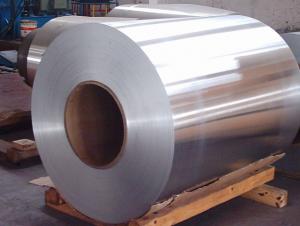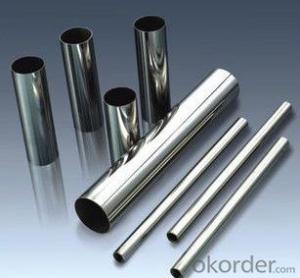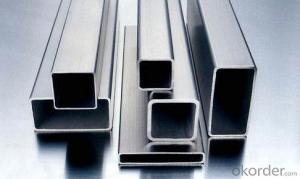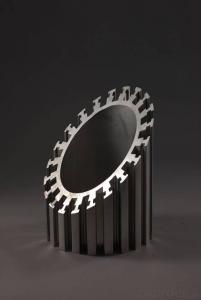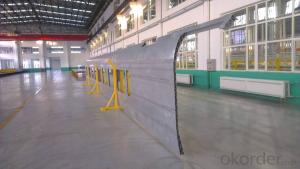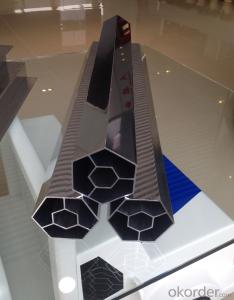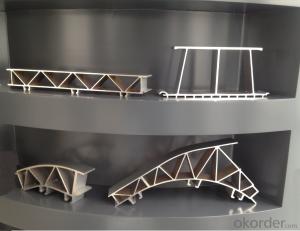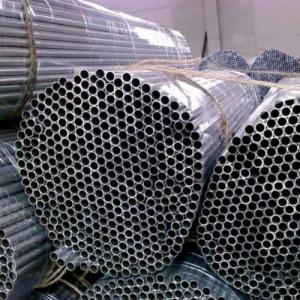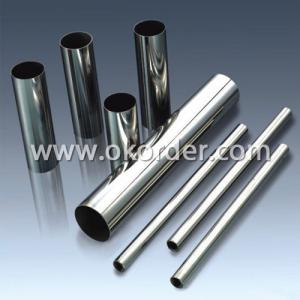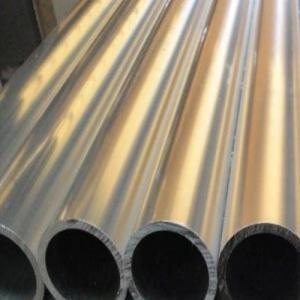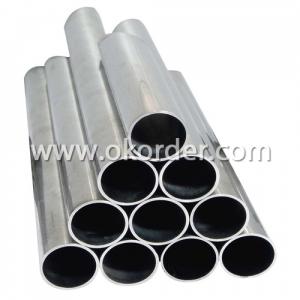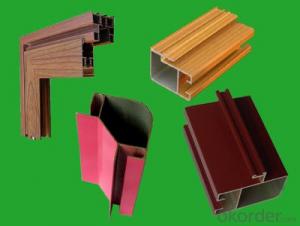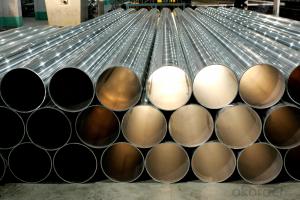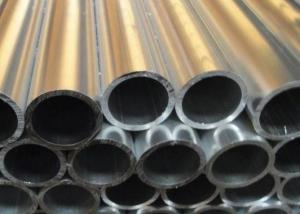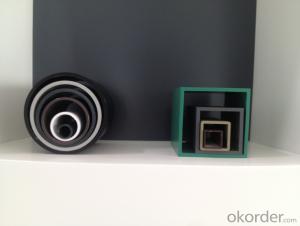Aluminum coil for any application
- Loading Port:
- China Main Port
- Payment Terms:
- TT OR LC
- Min Order Qty:
- -
- Supply Capability:
- -
OKorder Service Pledge
OKorder Financial Service
You Might Also Like
We provide a full range of precision aluminum for almost any application. We produce aluminum in a wide variety of alloys, including clad composites. Our aluminum can be produced in standard dimensions or custom made to your special requirements. We produce both imperial and metric units. We manufacture in compliance with the main international specifications, and tighter tolerances or custom tempers are available upon request. We offer various surface conditions, custom finishes (painting, anodizing, embossing), special processing, and multiple packaging options to meet our customer's unique requirements. The following is a summary of our capabilities.
Manufactured in compliance with the main international specifications and standards, including: Aluminum Association, ASTM, EN, and DIN.
We can also manufacture in compliance with other international standards including:ASME, SAE, AMS, AWS, FED, MIL, QQ, ISO, BS, AFNOR, JIS and GOST.
Manufactured in compliance with the main international specifications and standards.
Tighter tolerances are available upon request.
Aluminium (or aluminum; see spelling differences) is a chemical element in the boron group with symbol Al and atomic number 13. It is a silvery white, soft, ductile metal. Aluminium is the third most abundant element (after oxygen and silicon), and the most abundant metal in the Earth's crust. It makes up about 8% by weight of the Earth's solid surface. Aluminium metal is so chemically reactive that native specimens are rare and limited to extreme reducing environments. Instead, it is found combined in over 270 different minerals.The chief ore of aluminium is bauxite.
Aluminium is remarkable for the metal's low density and for its ability to resist corrosion due to the phenomenon of passivation. Structural components made from aluminium and its alloys are vital to the aerospace industry and are important in other areas of transportation and structural materials. The most useful compounds of aluminium, at least on a weight basis, are the oxides and sulfates.
Despite its prevalence in the environment, no known form of life uses aluminium salts metabolically. In keeping with its pervasiveness, aluminium is well tolerated by plants and animals. Owing to their prevalence, potential beneficial (or otherwise) biological roles of aluminium compounds are of continuing interest.
Aluminium alloys with a wide range of properties are used in engineering structures. Alloy systems are classified by a number system (ANSI) or by names indicating their main alloying constituents (DIN and ISO).
The strength and durability of aluminium alloys vary widely, not only as a result of the components of the specific alloy, but also as a result of heat treatments and manufacturing processes. A lack of knowledge of these aspects has from time to time led to improperly designed structures and gained aluminium a bad reputation.
One important structural limitation of aluminium alloys is their fatigue strength. Unlike steels, aluminium alloys have no well-defined fatigue limit, meaning that fatigue failure eventually occurs, under even very small cyclic loadings. This implies that engineers must assess these loads and design for a fixed life rather than an infinite life.
Another important property of aluminium alloys is their sensitivity to heat. Workshop procedures involving heating are complicated by the fact that aluminium, unlike steel, melts without first glowing red. Forming operations where a blow torch is used therefore require some expertise, since no visual signs reveal how close the material is to melting. Aluminium alloys, like all structural alloys, also are subject to internal stresses following heating operations such as welding and casting. The problem with aluminium alloys in this regard is their low melting point, which make them more susceptible to distortions from thermally induced stress relief. Controlled stress relief can be done during manufacturing by heat-treating the parts in an oven, followed by gradual cooling—in effect annealing the stresses.
The low melting point of aluminium alloys has not precluded their use in rocketry; even for use in constructing combustion chambers where gases can reach 3500 K. The Agena upper stage engine used a regeneratively cooled aluminium design for some parts of the nozzle, including the thermally critical throat region.
Another alloy of some value is aluminium bronze (Cu-Al alloy).
- Q:Can aluminum pipes be used for solar panel installations?
- Yes, aluminum pipes can be used for solar panel installations. Aluminum is a lightweight and durable material that is resistant to corrosion, making it suitable for outdoor applications like solar panel installations. Additionally, aluminum pipes are easy to work with and can be easily customized to meet the specific requirements of solar panel mounting systems.
- Q:What's the good quality of the aluminum tubes used for air conditioning?
- 1. pure copper has excellent ductilityAir conditioning has a tube expanding process in the manufacturing process, is put through the fin copper pipe burst, let bobbin and fin precision contact tube expanding technology is the key performance of heat exchanger of air conditioning, the ductility of copper to ensure good not easy in this process is broken.2. copper has an unparalleled corrosion resistanceCopper is much more resistant to corrosion than aluminum in the outdoor hostile environment. Statue of Liberty has been thinned since 1886 for more than 120 years, and that is proof of 0.127mm.4. in the joint place with copper and aluminum composite, two kinds of metal binding sites are likely to occur electrochemical corrosion potential of copper is +0.34V standard, standard potential of aluminum -1.28V, the potential difference between copper and aluminum is +1.62V. If direct contact between copper and aluminum, water in the air and carbon monoxide and other harmful impurities will form electrolyte on the contact surface of the joint, causing electrochemical corrosion, which is called galvanic cell.
- Q:What is the chemical composition of aluminum pipes?
- The chemical composition of aluminum pipes is primarily composed of aluminum (Al) as the main element.
- Q:What material can be used for welding aluminum copper tube?
- Generality:Universal 51 has the remarkable ability to weld all white metals. White metal includes zinc (almost impossible to solder), copper lead alloy, tin lead alloy, aluminum and lead, etc.. Universal 51 can also be any of the above types of metal and copper, brass, steel, stainless steel or bronze and any other metal welding.Universal 51 flux:The soldering flux is made of white metal and will not corrode. It destroys the oxide layer and helps the universal 51 free flow. In this way, the electrode will completely wet and penetrate the surface of the base metal to form a smooth and strong welding layer.Simplify the welding and maintenance of zinc die castings:For a long time, people think that zinc die castings with ordinary electrode can not be welded, because can cause zinc die castings sagging and collapses before welding. To achieve the best results, use universal 51 time to use universal 51 flux.
- Q:Can aluminum pipes be used for aerospace applications?
- Yes, aluminum pipes can be used for aerospace applications. Aluminum is a popular choice for aerospace applications due to its combination of strength, lightweight properties, and corrosion resistance. Aluminum pipes are commonly used in aircraft structures, such as fuselages, wings, and landing gear, as well as in various systems like fuel and hydraulic lines. The use of aluminum pipes allows for improved fuel efficiency and reduced overall weight, which are crucial factors in aerospace designs. Additionally, aluminum is easily formable and weldable, making it a versatile choice for aerospace applications.
- Q:Are aluminum pipes suitable for industrial applications?
- Aluminum pipes prove to be a fitting choice for various industrial applications. They present a multitude of advantages that render them an exceptional option for different industrial environments. Firstly, the lightweight nature of aluminum facilitates easy handling and transportation, thereby enhancing the convenience of installation and maintenance. Moreover, aluminum pipes boast exceptional resistance to corrosion, making them ideal for scenarios where exposure to moisture or chemicals is a concern. Additionally, aluminum pipes exhibit commendable thermal conductivity, ensuring efficient heat transfer, and making them a suitable choice for temperature control-dependent applications. Lastly, their remarkable durability and prolonged lifespan minimize the need for frequent replacements. Consequently, the distinctive characteristics of aluminum pipes establish them as a reliable and cost-effective solution for industrial applications.
- Q:Can aluminum pipes be bent or shaped?
- Indeed, it is possible to bend or shape aluminum pipes. Aluminum, being a malleable metal, allows for effortless transformation into various configurations without the risk of fracturing. Multiple approaches exist for bending or shaping aluminum pipes, including the utilization of a pipe bender, heat bending, or a hydraulic press. The chosen method relies on the desired form and the thickness of the aluminum pipe. It is crucial to exercise caution during the bending or shaping procedure to prevent detrimental effects on the pipe's integrity or the creation of structural vulnerabilities.
- Q:Does the Haier freezer BC/BD-102HT use a brass tube or an aluminum tube or an iron tube?Why do people say that freezer once energized, and then power outages, it is easy to disable?
- All the condensers in Haier are made of copper tubes
- Q:What are the different surface treatments available for aluminum pipes?
- Some of the different surface treatments available for aluminum pipes include anodizing, powder coating, painting, polishing, and brushing.
- Q:What happened to the mold sticking when drawing the aluminum pipe? How do you make the mold?
- 1. apply mold release agent 2. on the mold. The necessary taper shall be taken into account when the die is designedAskWhat angle is that design?Chasing the answerSmall angle, in order to facilitate the separation of the workpiece and the die. Theoretically, the greater the angle, the better the release, but without affecting the size of the workpiece as the premise, there is no fixed degree. Tests are necessary.
1. Manufacturer Overview |
|
|---|---|
| Location | |
| Year Established | |
| Annual Output Value | |
| Main Markets | |
| Company Certifications | |
2. Manufacturer Certificates |
|
|---|---|
| a) Certification Name | |
| Range | |
| Reference | |
| Validity Period | |
3. Manufacturer Capability |
|
|---|---|
| a)Trade Capacity | |
| Nearest Port | |
| Export Percentage | |
| No.of Employees in Trade Department | |
| Language Spoken: | |
| b)Factory Information | |
| Factory Size: | |
| No. of Production Lines | |
| Contract Manufacturing | |
| Product Price Range | |
Send your message to us
Aluminum coil for any application
- Loading Port:
- China Main Port
- Payment Terms:
- TT OR LC
- Min Order Qty:
- -
- Supply Capability:
- -
OKorder Service Pledge
OKorder Financial Service
Similar products
New products
Hot products
Hot Searches
Related keywords
